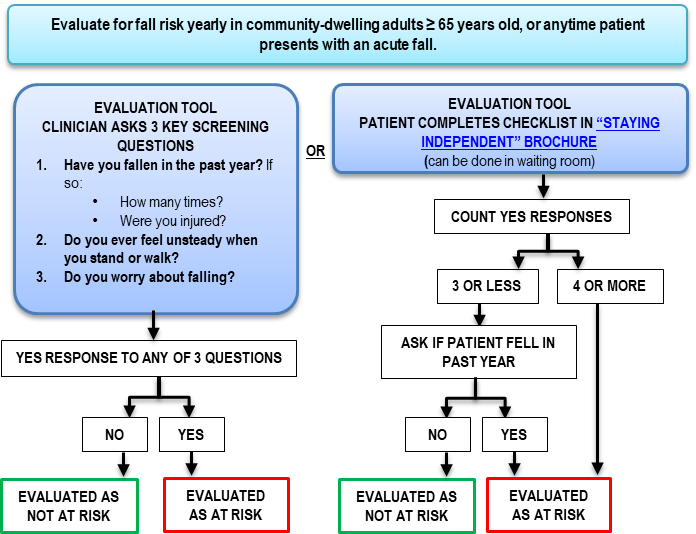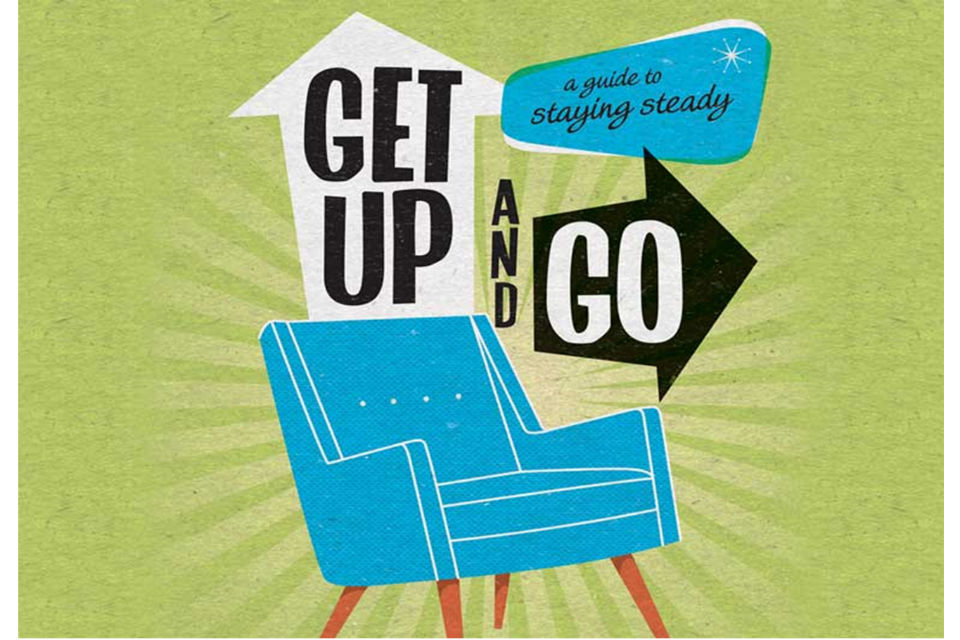The Greatest Guide To Dementia Fall Risk
Wiki Article
Examine This Report about Dementia Fall Risk
Table of ContentsThe 4-Minute Rule for Dementia Fall RiskThe Of Dementia Fall RiskDementia Fall Risk Fundamentals ExplainedDementia Fall Risk - The Facts
An autumn threat analysis checks to see how most likely it is that you will drop. The assessment normally consists of: This includes a collection of questions about your total wellness and if you have actually had previous falls or issues with equilibrium, standing, and/or walking.Treatments are recommendations that might minimize your risk of falling. STEADI includes three actions: you for your danger of dropping for your risk elements that can be enhanced to try to protect against drops (for example, equilibrium troubles, impaired vision) to minimize your threat of falling by making use of efficient methods (for example, providing education and learning and sources), you may be asked a number of questions consisting of: Have you dropped in the past year? Are you fretted about falling?
If it takes you 12 secs or even more, it might imply you are at higher threat for a fall. This test checks toughness and equilibrium.
Relocate one foot midway ahead, so the instep is touching the huge toe of your various other foot. Relocate one foot completely in front of the other, so the toes are touching the heel of your various other foot.
Rumored Buzz on Dementia Fall Risk
The majority of falls happen as a result of multiple contributing aspects; consequently, managing the threat of dropping starts with determining the variables that add to fall threat - Dementia Fall Risk. Some of one of the most relevant threat elements include: History of previous fallsChronic medical conditionsAcute illnessImpaired stride and balance, reduced extremity weaknessCognitive impairmentChanges in visionCertain high-risk medications and polypharmacyEnvironmental variables can additionally boost the risk for drops, including: Inadequate lightingUneven or harmed flooringWet or unsafe floorsMissing or harmed handrails and order barsDamaged or incorrectly equipped devices, such as beds, mobility devices, or walkersImproper use of assistive devicesInadequate guidance of individuals residing in the NF, including those that exhibit hostile behaviorsA effective autumn danger management program needs a detailed scientific evaluation, with input from all members of the interdisciplinary group

The treatment plan must additionally consist of treatments that are system-based, such as those find more that advertise a secure environment (appropriate illumination, handrails, get hold of bars, etc). The performance of the interventions should be assessed occasionally, and the treatment plan revised as essential to reflect modifications in the autumn danger analysis. Executing a fall danger administration system utilizing evidence-based best technique can minimize the occurrence of falls in the NF, while restricting the potential for fall-related injuries.
The Best Strategy To Use For Dementia Fall Risk
The AGS/BGS guideline advises screening all adults matured 65 years and older for loss danger every year. This screening includes asking patients whether they have dropped 2 or even more times in the past year or looked for clinical focus for a loss, or, if they have not dropped, whether they feel unsteady when walking.People who have fallen when without injury ought to have their equilibrium and stride reviewed; those with stride or balance problems need to receive extra analysis. A background of 1 loss without injury and without stride or equilibrium problems does not require additional analysis beyond ongoing yearly loss danger testing. Dementia Fall Risk. An autumn threat analysis is required as part of the Welcome to Medicare evaluation

Not known Facts About Dementia Fall Risk
Documenting a drops history is one of the high quality indicators for autumn prevention and monitoring. copyright medications in particular are independent here are the findings forecasters of drops.Postural hypotension can typically be alleviated by decreasing the dosage of blood pressurelowering medications and/or stopping drugs that have orthostatic hypotension as a side effect. Use above-the-knee support hose and sleeping with the head of the bed raised may likewise lower postural reductions in blood pressure. The recommended aspects of a fall-focused checkup are received Box 1.

A TUG time higher than or equal to 12 seconds recommends high autumn danger. The 30-Second Chair Stand examination assesses lower extremity toughness and equilibrium. Being unable to stand up from a chair of knee elevation without using one's arms suggests enhanced fall risk. The 4-Stage Equilibrium examination analyzes fixed balance by having the person stand in 4 positions, each considerably more tough.
Report this wiki page